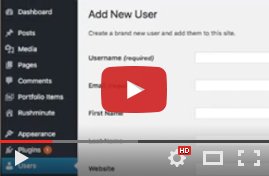When it comes to being social media, a lot of small business owners are wallflowers.
Some have tried to do social media, but it ended up getting awkward so they stopped. Others haven’t even tried because they’re paralyzed with fear – they don’t know how to do it so they figure it’s better to just avoid it altogether.
There are a couple of problems with that:
- Social media let’s people know your business is alive and kicking
- Social media is a great way for people to discover you
Prospective customers look for “social proof” that you’re thriving and reputable. If you don’t exist on social media or you’re inactive, you’re inadvertently sending out the wrong signal. This is particularly true for B2B service businesses.
Yeah, but Why?
You may love social media and use it all the time in your personal life. You may even be an Instagram or Pinterest wiz. But as a small business owner, what’s the point of social media?
Social media increases your online footprint and helps you attract prospects and keep customers.
Social media can:
- spread the word fast – Tweets can reach millions of people in minutes – way faster than traditional t.v. or newspapers – which makes it great for news or promotions.
- reach eyeballs for free – All the major social media channels have one thing in common: they’re free! The only investment you need is time – perfect for smaller businesses on a tight budget.
- be a powerful sales tool – Many companies are influencing or finding new customers on LinkedIn, Facebook or Instagram. Social media is a great way to give a boost to B2B biz dev.
Tip #1: Be Observant
Before you do any social media for your company, do what wallflowers do best: stand back and observe. Poke around the web and see what your peers are up to with social media. Find out:
- What’s working? What isn’t?
- What platforms are they using? Facebook or Twitter or both?
- How many employees are on their LinkedIn main page?
- Have they ever uploaded a video to YouTube?
- How many followers do they have on Instagram or Pinterest?
And if you want to get really analytical, create a spreadsheet and compare the results. This’ll help you understand which social media channels are good bets for you to try.
For instance, one of your competitors may have 10,000 Facebook fans but only 100 Twitter followers. This likely indicates Facebook is more suitable for your niche than Twitter.
Warning: Wallflowers are easily spooked by competitors with zillions of followers or posts – but don’t freak out! For now, just be an impartial observer and note the size and frequency of your competitors activity.
The goal is to see if you can come up with the following insights:
- Which social media platforms rank 1, 2 and 3 in usage/popularity among your peers
- Who’s the leader in your niche? Who are the stragglers?
- Where do you currently fit in the social media mix?
Armed with this intel, you’ll have a snapshot of how companies are using social media in your niche and where you fit.
Tip #2: Stake Your Claims
Based on the most active social media channels in your market/industry/niche, go ahead and set up a free business account for each of them.
Now don’t hyperventilate! You don’t have to be active on any of these channels; simply claim ownership of them and set up a basic profile.
Tips for setting up a basic profile:
- Use a real photo of your face. Social media is all about connecting and building trust. If you hate your picture being taken, think about this: your picture is going to be tiny. And if you really insist you can’t stand your picture, create an avatar instead (use this free avatar generator).
- Write a good company description. Don’t be shy about your expertise or accomplishments. If you don’t have any idea where to start, check out what industry leaders in your niche have in their company descriptions.
- Tell users what type of info you’ll share. For example, if you’re a cyber security company: “..tweeting cyber security, penetration testing, DFARS tips and advice”.
- Include a link to your website. Backlinks to your website boost incoming traffic from your social media accounts.
Tip #3: Find and Share Content
When you’re ready, it’s time to start sharing content. In the case of social media, the easiest way to do that is by curating content.
Let’s assume you’ve identified Twitter as the top channel for your niche.
The first thing you do is set up Google Alerts for interesting topics in your industry. This allows you to get a summary of current articles in your inbox, sorted by topic. All you have to do now is read the articles and determine which are helpful and worthy of sharing. Then simply cut and paste the link into your Twitter Feed.
That’s it! It not only builds momentum for your Twitter account, but it keeps you up to speed with the latest industry trends.
Tip #4: Break the Ice
After a few weeks of sharing your curated content, it’s time to learn how to follow someone and ask them to follow you back.
This may make you nervous, but don’t be. You just need to keep one thing in mind: stay balanced.
Many small business owners concentrate on getting followers and forget to follow back their followers. That’s bad form. What you want to do is spend about 10 to 15 minutes every few days reading stuff from both those who you follow and those who follow you back. Then, when you see something you like, click the like button. If you see something really good, click the share button. As long as you keep it natural, positive and sincere, you’re good to go.
Your goal is to increase the number of people in your social media account (both followers and following) to a point you’re comfortable. You don’t need to buy them, just slowly grow that number until you’re no longer embarrassed in relation to your peers.
And don’t worry if one of your competitors has 35,000 followers. Chances are they bought most of those followers (at least that’s what everyone assumes nowadays anyway).
Tip #5: Create Content
At a certain point, you’ll likely get the itch to create your own content. It’s only natural when you think about it. You’ve been reading the content that other people are generating and you’ll likely find yourself asking, “Hey, why don’t I create some of this stuff? It doesn’t look all that hard.”
You’re right. It’s not!
There are a three ways you can create content: you can either entertain people, promote your products/services or help people with a pain point.
Some common easy starter content you can create are:
- Holidays/Jokes/Inspirational memes – Create your own memes with an online meme generator. Just pick and image and change the text. It keeps things light and is an easy way to start generating likes and shares.
- Promotional content – Announce sales with catchy visuals that link back to existing pages on your site to build traffic and awareness.
- Helpful articles – Blog posts or white papers take a lot more work, but provide great backlinks to your site and Google will give your page a boost in their online search.
Pro Tip: When you’re starting out, try creating one piece of content for every 8 pieces of curated content you share. As you get more comfortable creating content, you can reduce your reliance on curated content. But remember, this is a social network, so don’t do promotional posts too often or you’ll seem too pushy.
Tip #6: Juggle Your Social Calendar
Once you’ve mastered all five tips for one social media channel, start another. The more channels you are active on, the larger your social footprint.
But don’t rush to build your social media empire. Start your second social channel only after your first one becomes second nature. You need to do two things now: continue feeding your first channel while learning your second channel.
In Conclusion
The good news is if you follow these six tips, you can get social media up and running for your company. Once you understand these basics and put in a bit of effort, you’ll overcome your shyness and have a solid social media base for your B2B business.
________________
ABOUT THE AUTHOR
Robbie Moore is the founder of Rushminute, a digital marketing agency in Lincoln, Nebraska. With 20+ years of experience in digital marketing, Robbie has worked with dozens of companies and organizations, large and small, around the globe. He also writes extensively about design, development, and business in general.






